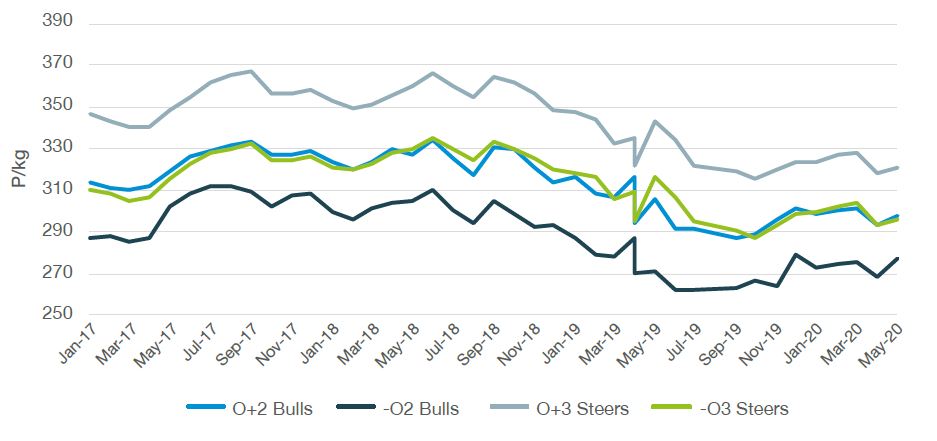- Home
- Knowledge library
- How to plan, monitor and market dairy beef
How to plan, monitor and market dairy beef
Identifying a target market is the key to successful cattle finishing. Learn more about how to plan, monitor and market dairy beef to help you turn a profit.
Back to: How to manage dairy beef production
When selling dairy beef, you should always avoid producing a batch of finished cattle without first securing a market for them. Identify a market or customer first. That way, you can guarantee a sale and produce animals to suit the specific needs.
How to find a market for dairy beef
There are various ways of selling finished cattle, including:
- Selling cattle as liveweight
- Selling carcase as deadweight
- Using marketing groups to sell cattle
- Through an integrated scheme or contract
You need to assess which best suits you and your system.
Things to consider before signing a contract
Before entering into a contract with a customer, you must understand whether there are any specific husbandry obligations as part of the agreement.
Find out the minimum contract price and calculate the potential margin by considering likely costs during the finishing period.
Understand the customer’s required specification, along with any potential bonus payments or factors that may incur deductions.
Preparing a budget for dairy beef
Margins in dairy beef systems, especially for bulls systems, are very sensitive to changes in calf price, feed and carcase price at sale.
Producing dairy beef under a contract provides you with some security, as long as the customer’s specifications are met.
See the graph below for the average deadweight cattle prices for O+ and –O grades of meat under the EUROP grid of classification. Dairy-bred cattle typically fall into this classification.
Learn more about how to assess and select cattle for slaughter
Average deadweight cattle prices in Great Britain from 2017 to 2020:

Feed: the major cost in beef production
Feed typically constitutes 75–80% of the variable costs of a beef enterprise.
Before buying any animals, you should calculate an enterprise cost of production, including variable and overhead costs.
Consider the potential impact of rising feed prices on the bottom line. When the price of concentrate is very high, bull beef systems lose their competitive advantage over steer beef systems.
Keep track of the current cereal prices with our latest market analysis
How the market can affect your budget
When preparing a budget, consider how sensitive it is to market forces.
Apply some sensitivity analysis for key input costs and output prices to explore the effect they have on your profit and loss.
Sensitivity analysis could include:
- Feed price +/- £25 per tonne
- Interest rates +/- 2%
- Fuel +/- £0.10 per litre
- Grain yield +/- 2 tonnes per hectare
- Calf price +/- £25 per head
- Beef price +/- £0.50 per kg of deadweight
How to write a partial budget
A partial budget can help you to calculate the financial effect of a proposed change to one aspect of your business. For example, switching from suckled beef production to contract rearing dairy beef.
For your partial budget, jot down:
- Extra income of the proposed change
- Lost income
- Costs saved
- Extra trading costs
Read more details about partial budgets when changing your business model, including templates you can use.
How to create a partial budget
How to monitor performance
It’s essential to know how your animals are performing and your actual costs of production.
Collecting records and then analysing them is the best way to understand how your business is performing.
The following key performance indicators (KPIs) are important to monitor with beef finishing:
- Cost of production per kilogram of beef produced (£/kg)
- Gross margin per kilogram of beef produced (£/kg)
- Mortality (%)
- Daily liveweight gain (kilogram per day)
- Cattle hitting target specification (%)
The University of Nottingham has developed a herd health toolkit, which can be used to benchmark mortality and growth:
The herd health toolkit a free, evidence based tool
Useful links
Access the ‘Dairy beef production systems' manual, for further practical advice
If you would like to order a hard copy of the Dairy beef production systems manual, please contact publications@ahdb.org.uk or call 0247 799 0069.

